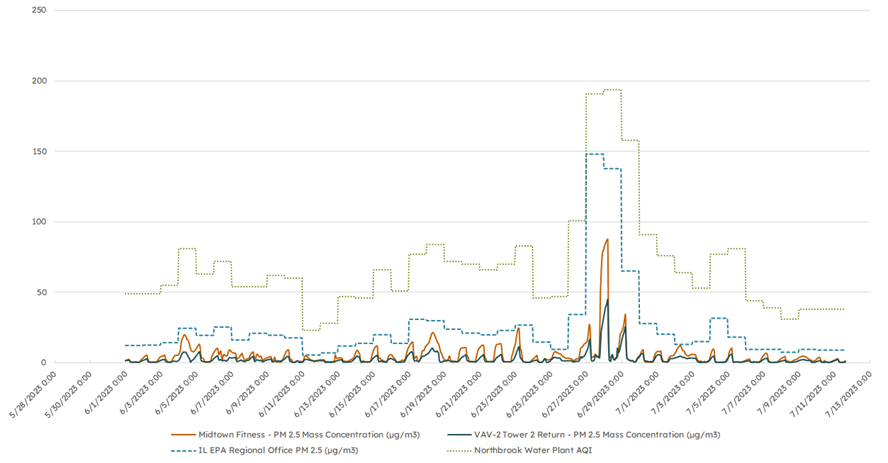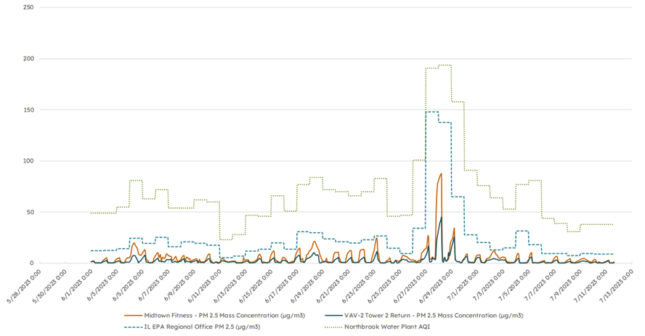What is indoor air quality? Learn the basics
This brief overview defines and describes IAQ as it relates to buildings
IAQ insights
- Indoor air quality (IAQ) quantifies the minimum acceptable air quality that promotes the health and comfort of the human occupants.
- This includes the removal of harmful pollutants coming into the occupied space from outside or those being generated inside the space.
While watching the webcast HVAC: IAQ and IEQ is a much more complete overview, reviewing this transcript of the presentation helps define the topic better. It has been edited for length and clarity.
This information was presented by Emmy Riley, CEM, BEAP, WELL Performance Testing Agent, Energy Engineering Team Leader & Account Manager, Cyclone Energy Group, Chicago.
What is indoor air quality (IAQ)? It might look a little bit circular with the definition from the Environmental Protection Agency, but it’s essentially the air quality in and around buildings in the inside and it’s typically focused on the health of the occupants.
What is in the air affecting the health of the occupants in the building? Parameters that are typically tested in buildings — I personally group them into these categories — but they overlap a little bit with each other. When I think about physical comfort, the IAQ parameters that I think about are temperature, space relative humidity and carbon dioxide for breathing comfort.
You may all remember during the wildfires, if you’re in a sensitive group, your lungs might have hurt. And for breathing comfort, I would include particulate matter (PM) 2.5 especially and PM 10. And then for breathing safety, nitrogen dioxide, things like methane, formaldehyde, volatile organic compounds (VOCs) and things like ozone. There are a million others.
A major thing that got everyone talking about IAQ was COVID and the presence of particulate matter like the droplets that might contain COVID. The ways that people talked about mitigating the risk of COVID in terms of IAQ were filtration and dilution or maximizing the amount of outside air (OA). Some buildings that I worked with were going far as in the heat of the summer using 100% OA. And most people have backed off that intensive strategy now, but people were really diluting the air a whole lot back in the early pandemic in 2020.

This shows the particulate matter in Chicago in June 2023, which directly affected the indoor air quality (IAQ) for buildings and residents. Courtesy: Consulting-Specifying Engineer
Another perhaps more recent IAQ hot topic has been wildfire smoke. I’m in Chicago and this summer we got quite a bit of wildfire smoke presence here, which was new for us.
In other places it’s common and counter to what people did during the early days of COVID, in that instance, people were trying to limit outside air. COVID filtration was a major strategy.
In Figure 1, the bottom solid lines are particulate matter from a building I work with. And then the dotted blue line is particulate matter reported, that’s outside PM 2.5, reported by the EPA in Illinois. And then the dashed green line on tap is air quality index also reported from the EPA.
You can see that in the beginning of June, we were seeing the effects of when the wildfires were bad in New York. And then you can see, as the summer moved on in Chicago, the air quality got up around June 27. That’s when Chicago was experiencing the worst air quality in the world.
And you can see that the outside, the blue dashed line outside PM 2.5 went up accordingly and particularly the overnight PM 2.5 went wild during the end of June wildfire smoke that we were experiencing in Chicago.
Do you have experience and expertise with the topics mentioned in this content? You should consider contributing to our CFE Media editorial team and getting the recognition you and your company deserve. Click here to start this process.

